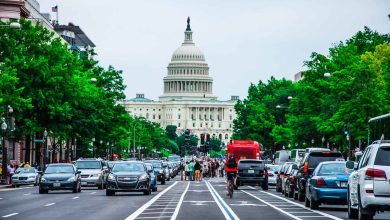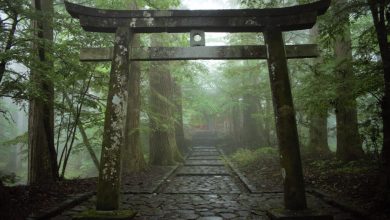Bhimashankar Jyothirlingam, Bhimashankaram
One of the Divine Jyotirlingam

Bhimashankaram:-
Bhimashankar is the temple containing one of the five jyotirlingas found in Maharashtra. Nana Fadnis, an eminent statesman of the Peshwa days, constructed the beautiful Shiva Temple at Bhimashankar.
The wooden entrance of the temple is beautifully carving. On Mahashivratri day, over 20,000 devotees attend a special religious fair. Bhimashankar is endowing with beautiful scenery and an all-around vibrant atmosphere.
It’s the temple of Lord Shiva and there are legends of Shiva which give us some information about this temple.
Lord Shiva slays the demon Tripurasura which can get the invisible flying in citadels Tripura. Lord Shiva had said that to take the abode on the Bhima,
but when the request of the gods, he decides to take a lap on the Sahyadri mountain, and after that, the sweat which is pouring forth from the body and also says that to forms in the river Bhimarathi.
The Bhimashankara temple there Mokshakund tirtha which was staying behind this temple.
And it was developing by the rishi of Kaushika.
The Sarvathirtha and Kusharanya tirtha there is the great river Bhima is flowing on the east, and also Jyanakund.
About Bhimashankar Temple:-
Enshrined inside the complex of the Bhimashankar Temple is a Shiva Lingam, which is approximately 1.5 feet in length.
Apart from the lingam, the temple also enshrines Goddess Kamalaja.
The Goddess is worship by the devotees, with as much reverence as Lord Shiva.
The Bhimashankar temple is a composite of old and new structures and is build in the Nagara style of architecture. It is a modest temple yet graceful temple, and it dates back to mid 18th century.
The Shikhar of the temple is build by Nana Phadnavis.
The great Maratha ruler Chatrapati Shivaji Maharaj also says to have made endowments to this temple to facilitate the carrying out, of worship services.
As with other Shiva temples in this area, the sanctum is at a lower level.
Although the structure here is fairly new, the shrine Bhimashankaram (and the Bhimarathi river) have refer to in literature dating back to the 13th century CE. Saint Jnaneshwar is said to visit Tryambakeshwar and Bhimashankar.
This temple in the Nagara style is an old and not a very large structure. The jyotir Lingam situates on top of the Sahyadri hill temple.
Lord Shiva is considering to be having a rest here after the Trpurantaka samharam. The sweat drops of Lord Shiva coonverts as steam & are running as Bhimarati.
There are two idols of Nandideva. One idol is old, while the other is of a fairly recent addition. There is a theertham & a well behind the temple structure.
The Bhimashankarar Lingam measures around one and a half feet & quite narrow. The Goddess is worshipped as Kamalaja.
The architecture of bhimashankar:-
Carvings of divinities and human figures can be found over the walls, pillars and doors of the temple. It is a popular myth that the Jyotirlingam was erected upon the self emanated Shiva Lingam.
Inside the temple, there is also a small shrine dedicated to lord Shani Dev. There is also a Portuguese bell to be found at the centre of the two pillars outside the Shani Temple.
Beauty unveils itself in many forms in this beautiful temple amongst the hillside.
The Temple can be divided into three parts-Sabhamandap, Kurmamandap and Garbhagriha.
The Sabhamandap is spacious and has counters of puja/Abhishek registrations.
Here one can see purohits explaining about different pujas to devotees. The present Sabhamandap is build in the year 1960. The main temple and
its Shikhar have intricate stone carvings, which makes the ornamentation of the mandap quite dull.
There are independent temples of Shani Maharaj and Nandi idols adjoining to main temple.
The main Bhimashankar temple is surrounding by Shri Ram, Dutta, Vitthal, and Mataji temples. From the Dutta temple, one can see the beautiful Kalash and Shikhar of the main Bhimashankar temple.
Garbhagriha –
the capacity of Garbhagriha is 25 to 30 people in the garbhgriha at the same time. Swayambhu Jyotirlinga is in an underground chamber that glows in the lamplight.
It is the only Jyotirlinga, where people offer marigold with bilva to Lord Shiva.
Devotees circumambulate the Jyotirlinga adding to the heap of sacred bilva leaves and marigold that cover it. The yoni is clad in etched silver.
Darshan Protocols
—In the main temple one sees the Nandi idol followed by goddess Parvati and before entering garbhagriha. After puja/abhishek to the Jyotirlinga one comes out from the same route. On the premises is a temple of Shanimaharaj and Nandi temple, follow by a place of akhand dhuni. The Dhun of Guru Gorakhnath is maintaining by the Nath Sampradaya even today.
Then come the temples of Shri Ram, Dutta, Vitthal, and Mataji and also visit the holy kund. Next, the main temple is the Shri Ram temple. The present temple is build in memory of a lady Taibai Arnaji Konkane. The devotees also offer peda (a sweet) to Bhimashankar.
A unique bell (Roman style) can be visible in front of the temple which was present by Chimaji Appa ( Brother of Bajirao Peshwa and uncle of Nanasaheb Peshwa )
Chimaji Appa collected two large bells after he won the war against Portuguese from Vasai Fort. He offered one here at Bhimashankar.
Importance of the place In this temple, Lord Eshwara, seen in Half man and Half woman (Ardha Narishwara) form. There is a continuous water flow from this Jyotirlinga, which is the specialty of this place.
Some more places of interest here are Kamalaja Devi temple, the origin of Bhima river, Bombay point, and Hanuman temple. In Pune city, Kelkar museum, Goddess Parvati temple are important. Nearer to this city, Mahabaleshwar, Kolhapur can visit. Shri Mahalaxmi temple is very famous in Kolhapur. This temple is considering one of the Shakti peetha.
Three worship services are offer every day Mahashivratri is a season of great festivity here




